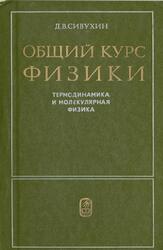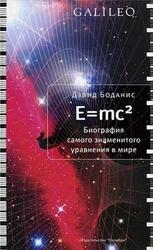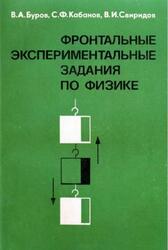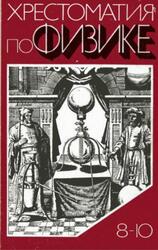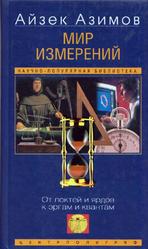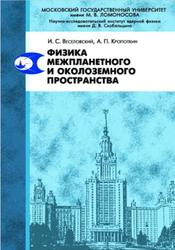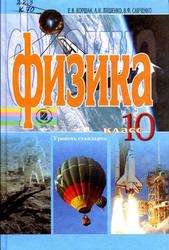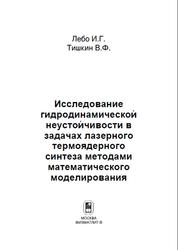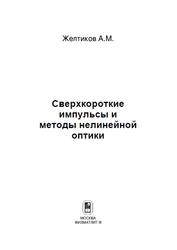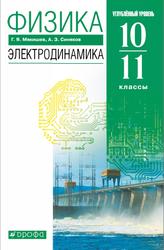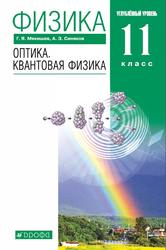The book begins with the experimental basis of quantum mechanics, where we look at those atomic and subatomic phenomena which confirm the failure of classical physics at the microscopic scale and establish the need for a new approach. Then come the mathematical tools of quantum mechanics such as linear spaces, operator algebra, matrix mechanics, and eigenvalue problems; all these are treated by means of Dirac’s bra-ket notation. After that we discuss the formal foundations of quantum mechanics and then deal with the exact solutions of the Schrödinger equation when applied to one-dimensional and three-dimensional problems. We then look at the stationary and the time-dependent approximation methods and, finally, present the theory of scattering.
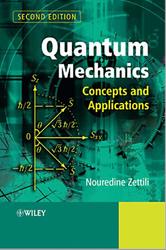
Quantum Mechanics and Classical Mechanics.
In Chapter 1 we focused mainly on those experimental observations which confirm the failure of classical physics at the microscopic level. We should bear in mind, however, that classical physics works perfectly well within the realm of the macroscopic world. Thus, if the theory of quantum mechanics is to be considered more general than classical physics, it must yield accurate results not only on the microscopic scale but at the classical limit as well.
How does one decide on when to use classical or quantum mechanics to describe the motion of a given system? That is, how do we know when a classical description is good enough or when a quantum description becomes a must? The answer is provided by comparing the size of those quantities of the system that have the dimensions of an action with the Planck constant, h. Since, as shown in (3.125), the quantum relations are characterized by h, we can state that if the value of the action of a system is too large compared to h, this system can be accurately described by means of classical physics. Otherwise, the use of a quantal description becomes unavoidable. One should recall that, for microscopic systems, the size of action variables is of the order of h; for instance, the angular momentum of the hydrogen atom is L=nh, where n is finite.
Contents.
Preface to the Second Edition.
Preface to the First Edition.
Note to the Student.
1 Origins of Quantum Physics.
1.1 HistoricalNote.
1.2 ParticleAspectofRadiation.
1.2.1 BlackbodyRadiation.
1.2.2 PhotoelectricEffect.
1.2.3 ComptonEffect.
1.2.4 PairProduction.
1.3 WaveAspectofParticles.
1.3.1 de Broglie’s Hypothesis: Matter Waves.
1.3.2 Experimental Confirmation of de Broglie’s Hypothesis.
1.3.3 MatterWaves forMacroscopicObjects.
1.4 ParticlesversusWaves.
1.4.1 ClassicalViewofParticles andWaves.
1.4.2 QuantumViewofParticles andWaves.
1.4.3 Wave–Particle Duality: Complementarity.
1.4.4 Principle of Linear Superposition.
1.5 Indeterministic Nature of the Microphysical World.
1.5.1 Heisenberg’s Uncertainty Principle.
1.5.2 Probabilistic Interpretation.
1.6 AtomicTransitions andSpectroscopy.
1.6.1 Rutherford Planetary Model of the Atom.
1.6.2 Bohr Model of the Hydrogen Atom.
1.7 QuantizationRules.
1.8 WavePackets.
1.8.1 LocalizedWavePackets.
1.8.2 Wave Packets and the Uncertainty Relations.
1.8.3 MotionofWavePackets.
1.9 ConcludingRemarks.
1.10 SolvedProblems.
1.11 Exercises.
2 Mathematical Tools of Quantum Mechanics.
2.1 Introduction.
2.2 TheHilbertSpace andWaveFunctions.
2.2.1 TheLinearVectorSpace.
2.2.2 TheHilbertSpace.
2.2.3 Dimension and Basis of a Vector Space.
2.2.4 Square-Integrable Functions: Wave Functions.
2.3 DiracNotation.
2.4 Operators.
2.4.1 General Definitions.
2.4.2 HermitianAdjoint.
2.4.3 ProjectionOperators.
2.4.4 CommutatorAlgebra.
2.4.5 Uncertainty Relation between Two Operators.
2.4.6 FunctionsofOperators.
2.4.7 Inverse andUnitaryOperators.
2.4.8 Eigenvalues and Eigenvectors of an Operator.
2.4.9 Infinitesimal and Finite Unitary Transformations.
2.5 RepresentationinDiscreteBases.
2.5.1 Matrix Representation of Kets, Bras, and Operators.
2.5.2 Change of Bases and Unitary Transformations.
2.5.3 Matrix Representation of the Eigenvalue Problem.
2.6 Representation in Continuous Bases.
2.6.1 GeneralTreatment.
2.6.2 PositionRepresentation.
2.6.3 MomentumRepresentation.
2.6.4 Connecting the Position and Momentum Representations.
2.6.5 ParityOperator.
2.7 MatrixandWaveMechanics.
2.7.1 MatrixMechanics.
2.7.2 WaveMechanics.
2.8 ConcludingRemarks.
2.9 SolvedProblems.
2.10 Exercises.
3 Postulates of Quantum Mechanics.
3.1 Introduction.
3.2 The Basic Postulates of Quantum Mechanics.
3.3 TheStateof aSystem.
3.3.1 ProbabilityDensity.
3.3.2 The Superposition Principle.
3.4 Observables andOperators.
3.5 Measurement inQuantumMechanics.
3.5.1 HowMeasurementsDisturbSystems.
3.5.2 ExpectationValues.
3.5.3 Complete Sets of Commuting Operators (CSCO).
3.5.4 Measurement and the Uncertainty Relations.
3.6 TimeEvolutionof theSystem’sState.
3.6.1 TimeEvolutionOperator.
3.6.2 Stationary States: Time-Independent Potentials.
3.6.3 Schrödinger Equation and Wave Packets.
3.6.4 The Conservation of Probability.
3.6.5 Time Evolution of Expectation Values.
3.7 Symmetries andConservationLaws.
3.7.1 InfinitesimalUnitaryTransformations.
3.7.2 FiniteUnitaryTransformations.
3.7.3 Symmetries andConservationLaws.
3.8 Connecting Quantum to Classical Mechanics.
3.8.1 Poisson Brackets and Commutators.
3.8.2 TheEhrenfestTheorem.
3.8.3 Quantum Mechanics and Classical Mechanics.
3.9 SolvedProblems.
3.10 Exercises.
4 One-Dimensional Problems.
4.1 Introduction.
4.2 Properties of One-Dimensional Motion.
4.2.1 Discrete Spectrum (Bound States).
4.2.2 Continuous Spectrum (Unbound States).
4.2.3 MixedSpectrum.
4.2.4 SymmetricPotentials andParity.
4.3 TheFreeParticle: ContinuousStates.
4.4 ThePotentialStep.
4.5 ThePotentialBarrier andWell.
4.5.1 The Case E > V0.
4.5.2 The Case E < V0: Tunneling.
4.5.3 TheTunnelingEffect.
4.6 The InfiniteSquareWellPotential.
4.6.1 TheAsymmetricSquareWell.
4.6.2 TheSymmetricPotentialWell.
4.7 TheFiniteSquareWellPotential.
4.7.1 The Scattering Solutions (E > V0).
4.7.2 The Bound State Solutions (0 < E < V0).
4.8 TheHarmonicOscillator.
4.8.1 EnergyEigenvalues.
4.8.2 EnergyEigenstates.
4.8.3 Energy Eigenstates in Position Space.
4.8.4 The Matrix Representation of Various Operators.
4.8.5 Expectation Values of Various Operators.
4.9 Numerical Solution of the Schrödinger Equation.
4.9.1 NumericalProcedure.
4.9.2 Algorithm.
4.10 SolvedProblems.
4.11 Exercises.
5 Angular Momentum.
5.1 Introduction.
5.2 OrbitalAngularMomentum.
5.3 General Formalism of Angular Momentum.
5.4 Matrix Representation of Angular Momentum.
5.5 Geometrical Representation of Angular Momentum.
5.6 SpinAngularMomentum.
5.6.1 Experimental Evidence of the Spin.
5.6.2 GeneralTheoryofSpin.
5.6.3 Spin 1????2andthePauliMatrices.
5.7 Eigenfunctions of Orbital Angular Momentum.
5.7.1 Eigenfunctions and Eigenvalues of Lz.
5.7.2 Eigenfunctions of L2.
5.7.3 Properties of the Spherical Harmonics.
5.8 SolvedProblems.
5.9 Exercises.
6 Three-Dimensional Problems.
6.1 Introduction.
6.2 3D Problems in Cartesian Coordinates.
6.2.1 General Treatment: Separation of Variables.
6.2.2 TheFreeParticle.
6.2.3 TheBoxPotential.
6.2.4 TheHarmonicOscillator.
6.3 3D Problems in Spherical Coordinates.
6.3.1 Central Potential: General Treatment.
6.3.2 The Free Particle in Spherical Coordinates.
6.3.3 The Spherical Square Well Potential.
6.3.4 The Isotropic Harmonic Oscillator.
6.3.5 TheHydrogenAtom.
6.3.6 Effect of Magnetic Fields on Central Potentials.
6.4 ConcludingRemarks.
6.5 SolvedProblems.
6.6 Exercises.
7 Rotations and Addition of Angular Momenta.
7.1 Rotations inClassicalPhysics.
7.2 Rotations inQuantumMechanics.
7.2.1 InfinitesimalRotations.
7.2.2 FiniteRotations.
7.2.3 Properties of the Rotation Operator.
7.2.4 EulerRotations.
7.2.5 Representation of the Rotation Operator.
7.2.6 Rotation Matrices and the Spherical Harmonics.
7.3 AdditionofAngularMomenta.
7.3.1 Addition of Two Angular Momenta: General Formalism.
7.3.2 Calculation of the Clebsch–Gordan Coefficients.
7.3.3 Coupling of Orbital and Spin Angular Momenta.
7.3.4 Addition of More Than Two Angular Momenta.
7.3.5 Rotation Matrices for Coupling Two Angular Momenta.
7.3.6 Isospin.
7.4 Scalar,Vector, andTensorOperators.
7.4.1 ScalarOperators.
7.4.2 VectorOperators.
7.4.3 Tensor Operators: Reducible and Irreducible Tensors.
7.4.4 Wigner–Eckart Theorem for Spherical Tensor Operators.
7.5 SolvedProblems.
7.6 Exercises.
8 Identical Particles.
8.1 Many-ParticleSystems.
8.1.1 Schrödinger Equation.
8.1.2 InterchangeSymmetry.
8.1.3 Systems of Distinguishable Noninteracting Particles.
8.2 Systems of IdenticalParticles.
8.2.1 Identical Particles in Classical and Quantum Mechanics.
8.2.2 Exchange Degeneracy.
8.2.3 SymmetrizationPostulate.
8.2.4 Constructing Symmetric and Antisymmetric Functions.
8.2.5 Systems of Identical Noninteracting Particles.
8.3 ThePauliExclusionPrinciple.
8.4 The Exclusion Principle and the Periodic Table.
8.5 SolvedProblems.
8.6 Exercises.
9 Approximation Methods for Stationary States.
9.1 Introduction.
9.2 Time-Independent Perturbation Theory.
9.2.1 Nondegenerate Perturbation Theory.
9.2.2 Degenerate Perturbation Theory.
9.2.3 Fine Structure and the Anomalous Zeeman Effect.
9.3 TheVariationalMethod.
9.4 The Wentzel–Kramers–Brillouin Method.
9.4.1 GeneralFormalism.
9.4.2 Bound States for Potential Wells with No Rigid Walls.
9.4.3 Bound States for Potential Wells with One Rigid Wall.
9.4.4 Bound States for Potential Wells with Two Rigid Walls.
9.4.5 Tunneling through a Potential Barrier.
9.5 ConcludingRemarks.
9.6 SolvedProblems.
9.7 Exercises.
10 Time-Dependent Perturbation Theory.
10.1 Introduction.
10.2 The Pictures of Quantum Mechanics.
10.2.1 TheSchrödingerPicture.
10.2.2 TheHeisenbergPicture.
10.2.3 The InteractionPicture.
10.3 Time-Dependent Perturbation Theory.
10.3.1 Transition Probability.
10.3.2 Transition Probability for a Constant Perturbation.
10.3.3 Transition Probability for a Harmonic Perturbation.
10.4 Adiabatic and Sudden Approximations.
10.4.1 AdiabaticApproximation.
10.4.2 Sudden Approximation.
10.5 InteractionofAtomswithRadiation.
10.5.1 Classical Treatment of the Incident Radiation.
10.5.2 Quantization of the Electromagnetic Field.
10.5.3 Transition Rates for Absorption and Emission of Radiation.
10.5.4 Transition Rates within the Dipole Approximation.
10.5.5 The Electric Dipole Selection Rules.
10.5.6 Spontaneous Emission.
10.6 SolvedProblems.
10.7 Exercises.
11 Scattering Theory.
11.1 Scattering andCrossSection.
11.1.1 Connecting the Angles in the Lab and CM frames.
11.1.2 Connecting the Lab and CM Cross Sections.
11.2 Scattering Amplitude of Spinless Particles.
11.2.1 Scattering Amplitude and Differential Cross Section.
11.2.2 ScatteringAmplitude.
11.3 TheBornApproximation.
11.3.1 The First Born Approximation.
11.3.2 Validity of the First Born Approximation.
11.4 PartialWaveAnalysis.
11.4.1 Partial Wave Analysis for Elastic Scattering.
11.4.2 Partial Wave Analysis for Inelastic Scattering.
11.5 Scatteringof IdenticalParticles.
11.6 SolvedProblems.
11.7 Exercises.
A The Delta Function.
A.1 One-DimensionalDeltaFunction.
A.1.1 Various Definitions of the Delta Function.
A.1.2 Properties of the Delta Function.
A.1.3 Derivative of theDeltaFunction.
A.2 Three-DimensionalDeltaFunction.
B Angular Momentum in Spherical Coordinates.
B.1 DerivationofSomeGeneralRelations.
B.2 Gradient and Laplacian in Spherical Coordinates.
B.3 Angular Momentum in Spherical Coordinates.
C C++ Code for Solving the Schrödinger Equation.
Index.
Бесплатно скачать электронную книгу в удобном формате, смотреть и читать:
Скачать книгу Quantum Mechanics, Concepts and Applications, Zettili N., 2009 - fileskachat.com, быстрое и бесплатное скачивание.
Скачать pdf
Ниже можно купить эту книгу, если она есть в продаже, и похожие книги по лучшей цене со скидкой с доставкой по всей России.Купить книги
Скачать - pdf - Яндекс.Диск.
Дата публикации:
Теги: учебник по физике :: физика :: Zettili
Смотрите также учебники, книги и учебные материалы:
Следующие учебники и книги:
Предыдущие статьи:

